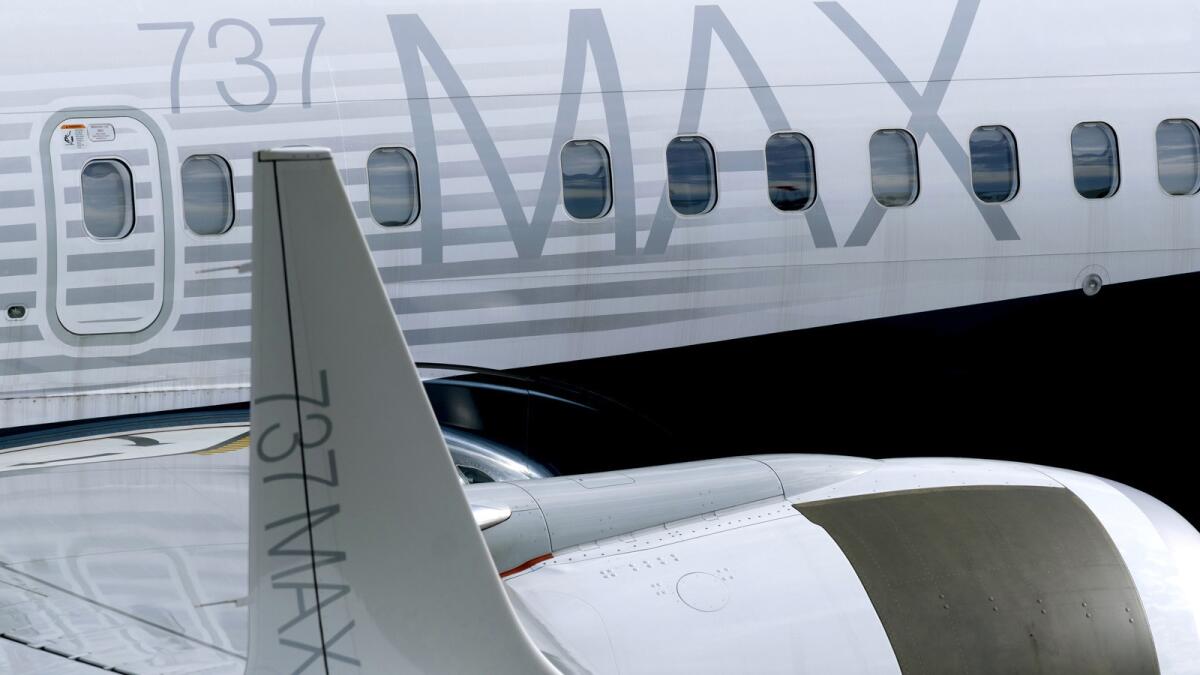Boeing’s 737 Max halt is likely to only dent U.S. economy

Boeing Co.’s production halt for the 737 Max is likely to be little more than a temporary headwind for the U.S. economy — especially now that the expansion is on firmer footing compared with other times since the aircraft was grounded in early 2019.
The company’s decision to temporarily suspend production, starting next month, comes as the world’s largest economy has shaken off resurgent recession fears in recent months. Growth projections are stable, if unspectacular, after global risks eased on trade tensions and Brexit and the Federal Reserve moved to buttress growth with three interest-rate cuts.
Bloomberg Economics researcher Andrew Husby estimated that the first-quarter impact would be at most a subtraction of 1 percentage point from growth of gross domestic product. JPMorgan Chase & Co. chief U.S. economist Michael Feroli said in a report Tuesday that the indefinite halt will likely subtract around 0.5 of a percentage point from the first-quarter growth, and said that the eventual resumption of production should provide a lift to the expansion when it happens.
Although such output reductions might be noticeable for a brief time and in line items such as exports, it’s a drop in the bucket for a $21.5-trillion economy and probably won’t be a longer-term blow.
“Boeing is a big company, big exporter, big manufacturer, and this is their most important product, but that doesn’t move the needle on full-year GDP,” Feroli said in an interview. “It’s just an indication of the size and breadth of the economy. It’s hard for one company to leave a lasting imprint.”
Analysts expect the U.S. economy to expand 2.2% in 2019, based on the fourth-quarter change from a year earlier, followed by 1.8% in 2020, in line with what economists generally see as the long-run potential rate.
“Assuming further production cuts — including across suppliers — and a halt to inventory accumulation, the impact on GDP in the first quarter could conceivably approach a 1 percentage point drag on the growth rate,” Husby said.
The effects of the halt will likely ripple through the Institute for Supply Management manufacturing reports, Fed industrial production data, and government figures on durable goods, he said.
Elsewhere, Capital Economics forecaster Michael Pearce also says the idling could knock up to 0.5 percentage point off of first-quarter growth should it last the entire three months, while Ian Shepherdson of Pantheon Macroeconomics sees a hit of about a quarter point in the period. Stephen Stanley of Amherst Pierpont said the halt would be an additional drag on GDP, but the impact should be small.
The key complication, though, is that the halt is open-ended as Boeing doesn’t know when the plane will be approved for service. That makes supply-chain ripple effects much harder to predict, though Boeing did eliminate some uncertainty for many of its 150,000 employees by saying that it plans for those on the 737 program to continue related work or be temporarily assigned to other teams in Puget Sound.
The company had been producing the single-aisle planes at a pace of 42 per month, down from the 52-jet pace that the Seattle-area plant maintained before the fatal crashes. There are now about 400 in storage, Boeing said Monday.
Even so, as production continued in the months since the grounding, measures of manufacturing have shown that the broader impact has been manageable so far.
The Commerce Department’s durable goods data show new orders and shipments for civilian aircraft and parts are both slower since the global grounding, but remain far from collapsing. Average monthly bookings this year through October are running about a third lower than they were in the same time last year, while shipments are off about a sixth.
Boeing’s woes have been easier to see in trade, a category that has potential to weigh on GDP. U.S. exports of civilian aircraft since the grounding have been running below their longer-run average. The April tally of $2.6 billion was the lowest since 2011, Commerce Department data show.
Inventories, another category that flows into GDP calculations, have also been bloated by the hundreds of parked airliners. Stockpiles of commercial aircraft and parts, a category that’s been in a general uptrend for a decade and a half, have extended gains since March, rising 15% to a record $78 billion in October, the most recent Commerce Department data show.
Those civilian aircraft inventories account for 18% of total U.S. inventories of durable goods. The category was almost entirely responsible for the broader increase in October, the latest data available.
Kearns writes for Bloomberg.
More to Read
Inside the business of entertainment
The Wide Shot brings you news, analysis and insights on everything from streaming wars to production — and what it all means for the future.
You may occasionally receive promotional content from the Los Angeles Times.










